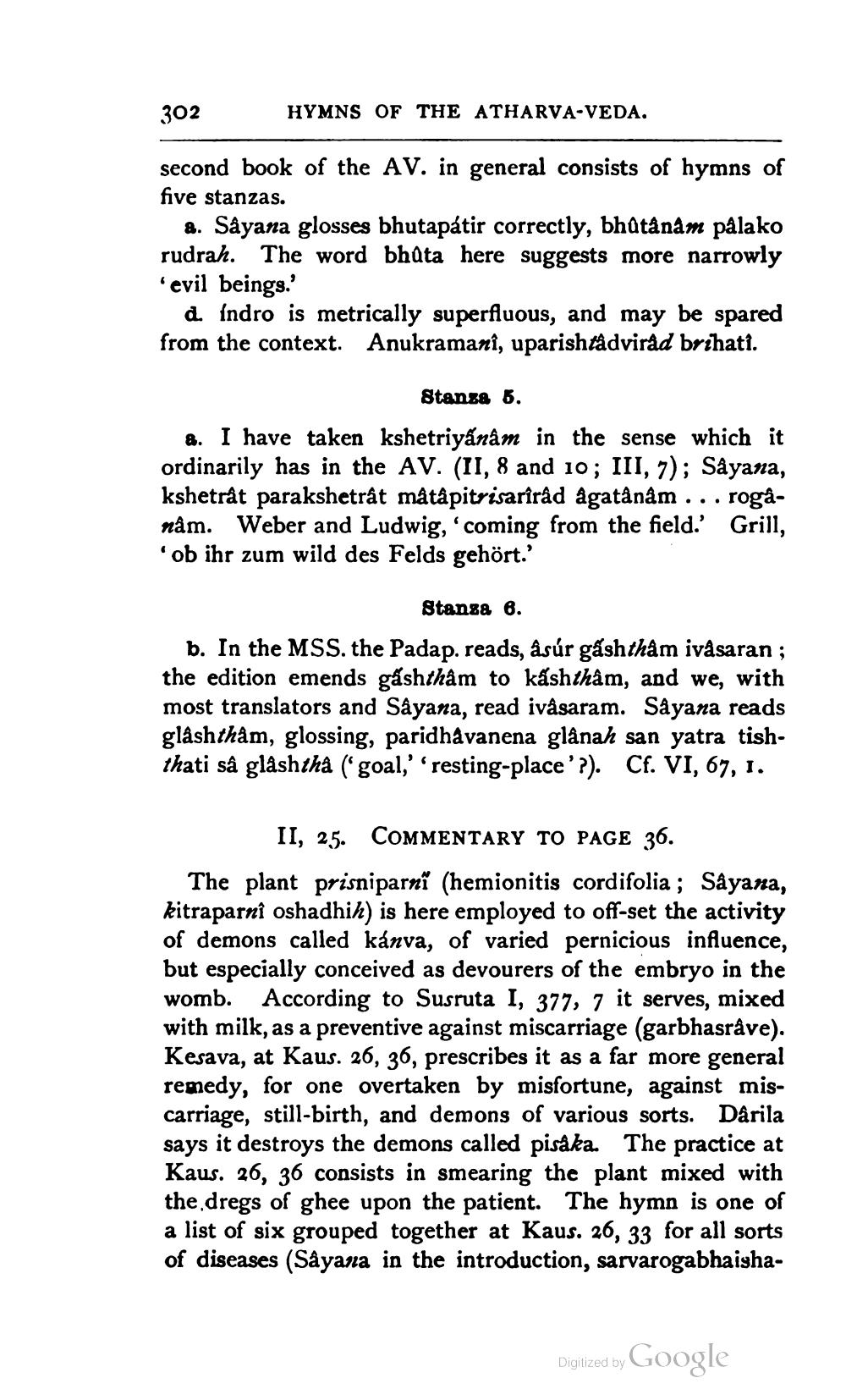________________
302
HYMNS OF THE ATHARVA-VEDA.
second book of the AV. in general consists of hymns of five stanzas.
a. Såyana glosses bhutapátir correctly, bhùtânam pålako rudrah. The word bhata here suggests more narrowly evil beings.'
d. Indro is metrically superfluous, and may be spared from the context. Anukramani, uparishtâdviråd brihati.
Stansa 6. a. I have taken kshetriyânâm in the sense which it ordinarily has in the AV. (II, 8 and 10; III, 7); Sayana, kshetrat parakshetrat matâpitrisarîråd ågatånam ... rogånâm. Weber and Ludwig, coming from the field.' Grill, ob ihr zum wild des Felds gehört.'
Stanza 6. b. In the MSS. the Padap. reads, ásúr gåshthàm iväsaran ; the edition emends gáshthâm to kashthâm, and we, with most translators and Sayana, read iväsaram. Sayana reads glashthâm, glossing, paridhavanena glânah san yatra tishthati så glashtha (goal,''resting-place'?). Cf. VI, 67, 1.
II, 25. COMMENTARY TO PAGE 36. The plant prisniparni (hemionitis cordifolia ; Såyana, kitraparni oshadhih) is here employed to off-set the activity of demons called kánva, of varied pernicious influence, but especially conceived as devourers of the embryo in the womb. According to Susruta I, 377, 7 it serves, mixed with milk, as a preventive against miscarriage (garbhasråve). Kesava, at Kaus. 26, 36, prescribes it as a far more general remedy, for one overtaken by misfortune, against miscarriage, still-birth, and demons of various sorts. Darila says it destroys the demons called pisáka. The practice at Kaus. 26, 36 consists in smearing the plant mixed with the dregs of ghee upon the patient. The hymn is one of a list of six grouped together at Kaus. 26, 33 for all sorts of diseases (Såyana in the introduction, sarvarogabhaisha
Digitized by Google




